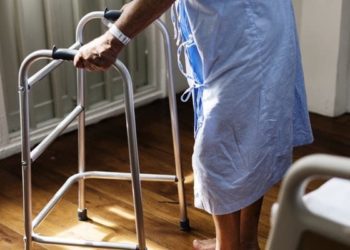Ocular trauma may be a predictor of mortality in geriatric patients
1. Geriatric patients with ocular trauma had higher mortality rates within 5 years, particularly within the first year post-injury.
Evidence Rating Level: 2 (Good)
Ocular trauma is a leading cause of vision loss and may be a result of falls. In addition to contributing to severe injuries, falls are also associated with an increased risk of mortality in the elderly. Although numerous studies have examined visual deficits and the frequency of falls leading to hospitalizations or ocular morbidity, research exploring the link between ocular trauma and mortality is limited. This study thus examined the association between geriatric ocular trauma and mortality. This retrospective cohort study analyzed data from the I2B2 Carolina Data Warehouse and included patients >65 years recruited between April 2011 and June 2016, with a minimum of five years of follow-up from the time of presentation. The study group included patients with ocular trauma, which included injuries to the eye and orbit, open wounds of the eyelid and periocular area, fractures of the orbital floor, facial bones, injury to the conjunctiva, contusion of the eyeball, ocular laceration, penetrating wounds of the orbit, or avulsion of the eye. Patients who were victims of transport accidents, homicide, assault, vehicle accidents, or intentional injury were excluded. The control group consisted of patients with age-related nuclear cataracts. In total, 602 patients suffered ocular trauma (mean age = 80.7, female [%] = 391 [64.9]) and 1,066 patients of similar age had age-related nuclear cataracts (mean age = 75.6, female [%] = 624 [58.5]). Within five years, 74 (11.30%) patients died in the study group and 69 patients (6.47%) died in the control group. For the study group, the annual mortality rates were 4.15%, 2.60%, 1.96%, 2.54%, and 0.56%, respectively. For the control group, the annual mortality rates were 1.03%, 1.70%, 1.64%, 0.88%, and 1.38% respectively. Overall, the study finding suggests that geriatric patients with ocular trauma are at a higher risk of mortality compared to age-matched controls without such injuries, particularly within the first year post-injury. These findings underscore the importance of multidisciplinary interventions such as fall prevention strategies and post-trauma geriatric assessments to reduce mortality risk.
Click to read the study in PLOSONE
Image: PD
©2025 2 Minute Medicine, Inc. All rights reserved. No works may be reproduced without expressed written consent from 2 Minute Medicine, Inc. Inquire about licensing here. No article should be construed as medical advice and is not intended as such by the authors or by 2 Minute Medicine, Inc.







